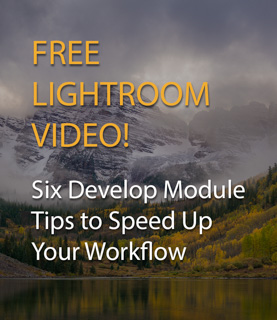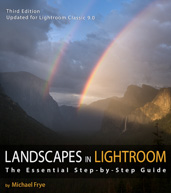by Michael Frye | Jun 12, 2022 | Composition, Light and Weather
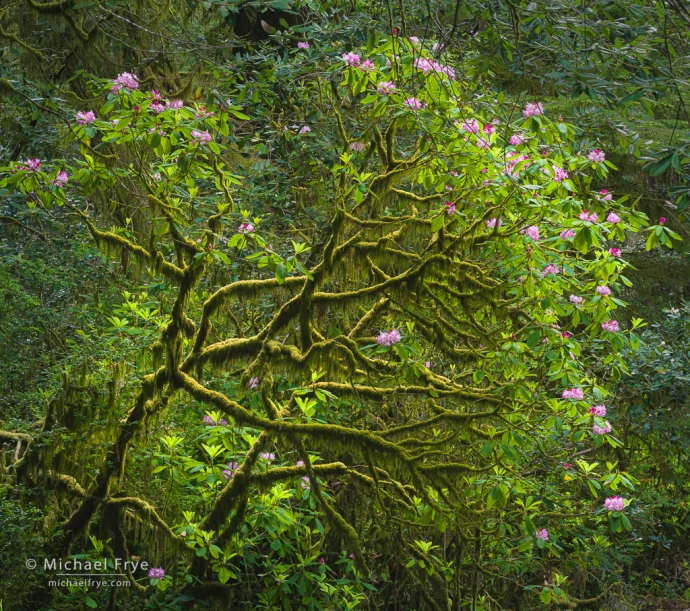
Lichen-covered rhododendron, Northern California. This was an overcast day, and the soft, even light helped simplify this complex scene, and emphasize the color contrasts between the pink rhododendrons and various shades of green. I used a long lens to isolate the rhododendron against a dark, leafy background. Moving closer with a shorter lens would have required looking up at the top of the tree, forcing me to include bright, distracting patches of sky. 159mm, 1/4 sec. at f/16, ISO 800, polarizing filter to cut reflections on the leaves.
Forests can be challenging to photograph. They’re beautiful, but cluttered, and often visually chaotic.
Creating order out of that chaos requires finding ways to simplify things. That’s one of the reasons fog is so helpful for these scenes: it obscures the background, reducing the clutter. (It also lends a wonderful atmosphere to the photographs.)
During our recent workshop in the redwoods we did get some fog, and even sunbeams. I’m sure I’ll post some of those photos down the road.
But there were also many occasions before, during, and after the workshop when we didn’t have fog, and I was photographing forests in soft light, or with sunlight filtering through the trees. What then?
(more…)
by Michael Frye | May 23, 2022 | Light and Weather, Travels and Stories
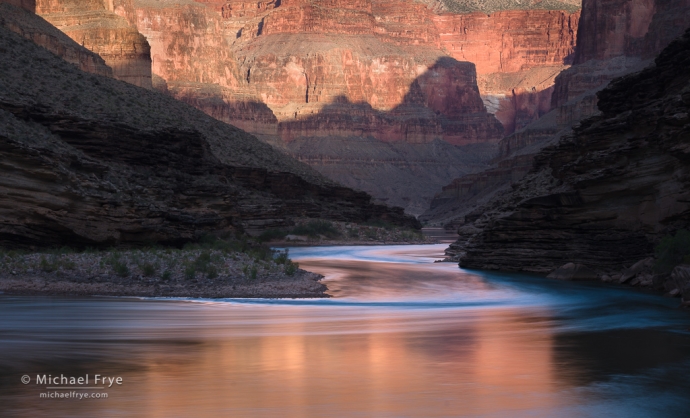
Winding river, Grand Canyon NP, Arizona. 78mm, 20 seconds at f/11, ISO 100, 10-stop ND filter.
In 1540 Spanish Conquistadors became the first Europeans to ever see the Grand Canyon. They greatly underestimated the scale of what they were seeing. Looking down from the rim they thought the river was six feet wide (the average width is actually 300 feet). Rocks that they thought were as tall as a man turned out to be 300 feet high.
(more…)
by Michael Frye | May 19, 2022 | Light and Weather
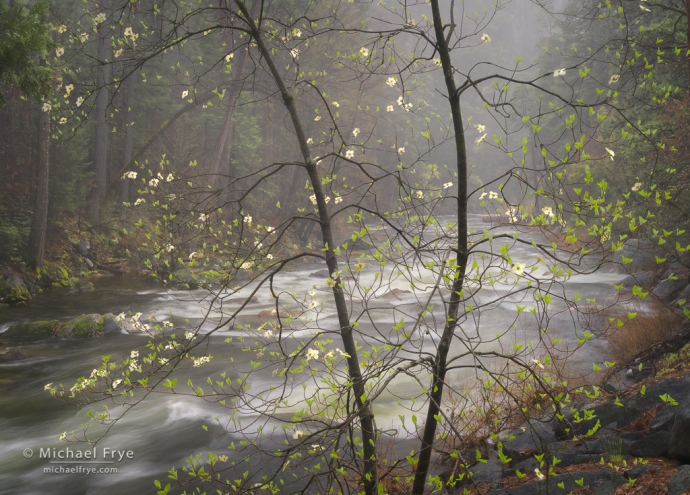
Dogwood, mist, and the Merced River, Yosemite NP, California. 50mm, 1 sec. at f/16, ISO 800.
On a stormy afternoon in April, before we left for the Grand Canyon, Claudia and I drove up to Yosemite Valley and found the dogwoods beginning to bloom.
They were just coming out. When the dogwood blossoms first emerge their petals (actually bracts) are green, then change to white. On that April day many were still green, but maybe half had turned white already. That was an early appearance for dogwoods – April 11th. But with such a dry winter and spring this precocious bloom wasn’t all that surprising.
(more…)
by Michael Frye | May 17, 2022 | Night Photography, Travels and Stories
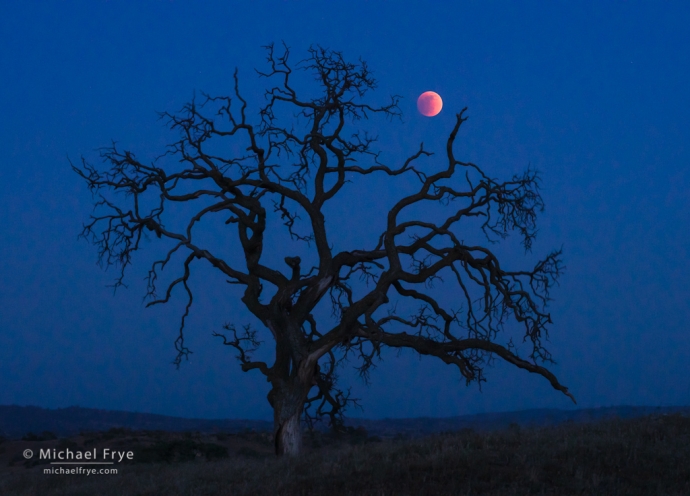
Blue oak and eclipsed moon, Sierra Nevada foothills, California. 122mm, 1 second at f/11, ISO 6400.
On Sunday a total lunar eclipse was visible in many parts of the world, including our corner of California in the Sierra Nevada.
I’ve photographed many lunar eclipses before. I like capturing sequences of the moon above a landscape in various eclipse stages – if possible. But for this eclipse I couldn’t think of any nearby spot that would add a compelling foreground while looking in the right direction (southeast) for a sequence like that, plus it appeared that clouds might interrupt any attempt at capturing a long eclipse sequence.
Instead, I thought of a lone oak tree in the Sierra foothills that might lend itself to a different treatment: a telephoto view of just the tree and eclipsed moon at dusk. I had photographed this tree before, and it looked like the tree and moon would line up well. Using a long lens would make the moon look larger, plus capturing a single frame like this would require only a brief cloud-free interval to work, while a sequence would need several hours of clear skies.
(more…)
by Michael Frye | May 11, 2022 | Travels and Stories, Vision and Creativity
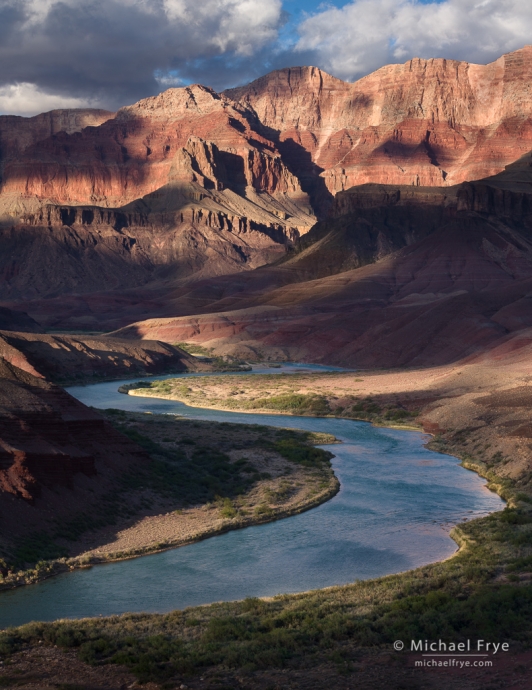
Dappled light along the Colorado River, Grand Canyon National Park. Watching the cloud shadows move across the canyon from this spot was one of the highlights of the trip for me.
Most people make their best photographs of places or subjects they’re familiar with.
In landscape photography, it helps immensely if you know an area well, and know what spots might work best under certain conditions, so you can put yourself in the right place at the right time.
I think it’s also natural and inevitable that we’re going to make our best and most meaningful images when we feel a connection with the subject or place. You can often trace a direct correlation between the depth of that connection and the depth of the imagery. And making those connections takes time.
(more…)






